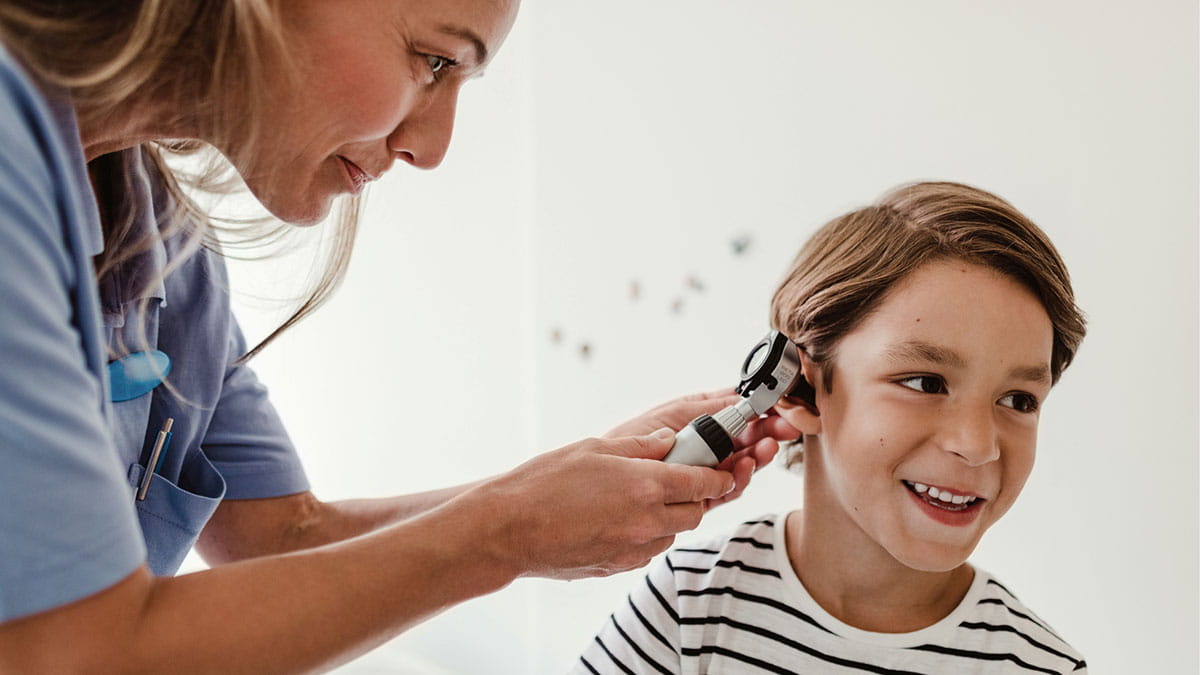
Grommet surgery
What are grommets? 1
Grommets are tiny tubes that can be inserted into the eardrums to treat ear infections or glue ear. The tubes let fluid drain out of the ears, which helps treat the infection.
Grommet surgery is usually performed on children (but sometimes on adults), in hospital under general anaesthetic (you’ll be asleep).
Grommet surgery is performed by an Ear Nose and Throat (ENT) surgeon.
The medical term for grommet surgery is ‘myringotomy’.
Skip straight to:
Public and private hospital options
It’s important to understand how getting your procedure in a public or private hospital differs.
| Question | Public system (Without health insurance) | Private system (With health insurance) |
|---|---|---|
| Will I avoid public hospital waiting lists? |
No. |
Yes. |
| Will I be able to choose my hospital? |
No. |
Yes. |
| Will I be able to choose my doctor or surgeon? |
No. |
Yes. |
| Will I have out-of-pocket costs? |
No. |
Yes. |
What’s covered in a public hospital?
In a public hospital, grommet surgery is covered by Medicare for eligible residents.
Once you are discharged from hospital, you may still need to pay out-of-pocket for things like medicines and health services (like physiotherapy or occupational therapy).
What’s covered in a private hospital?
In a private hospital, private health insurance can cover some costs of grommet surgery.
You may have an out-of-pocket cost if you use private hospital cover when you get treatment. You can minimise some of these costs by choosing a hospital and specialist that have agreements with your health insurer.
If you have an excess on your cover, you will have to pay for that out of pocket.
What is hospital excess?
Hospital excess is the amount of money you contribute upfront (out of your own pocket) before you can claim a benefit on hospital treatment. With HBF hospital cover, you choose a set excess option when you first get hospital cover, but you can change your excess at any time.
With HBF, you only pay hospital excess once per person, per calendar year (to a maximum of twice on a family policy) when you’re admitted to hospital.
Are you an HBF member? You can check your excess in myHBF or the HBF App. This is the set amount you’ll pay when you’re admitted.
What is an out-of-pocket cost?
A hospital out-of-pocket cost is the portion of a hospital bill that you pay from your own pocket for which you won’t be reimbursed – by either health insurance or Medicare.
How to find health cover for grommet surgery
If you want private health insurance cover for grommet surgery, look for HBF hospital cover (not extras cover) that includes a category called ‘Tonsils, adenoids and grommets’.
You need to hold hospital cover that includes 'Tonsils, adenoids and grommets' for two months before you can claim for grommet surgery (or 12 months if you need grommet surgery due to a pre-existing condition).
Ask your GP for an open referral
Your GP is the one who’ll most likely refer you to a specialist – but you may want the option to choose your own specialist.
Asking for an open referral can let you:
- Choose your own specialist.
- Find a specialist with good availability who can perform treatment at the hospital you prefer.
- Find a specialist that you trust to perform your surgery.
- Find a specialist with minimum out-of-pocket expenses for you.
Find a surgeon with minimum out-of-pocket costs
To find ENT surgeons who have an agreement with HBF, just search for ‘ENT surgeon’ in our find a provider tool.
- Look for the “Full Cover” tick mark or “Access Gap Cover” tick mark.
- These specialists will help minimise your out-of-pocket cost.
If you’ve already started working with a specialist
If you’ve already got a specialist, ask them these questions:
- Do you have a Full Cover or No Gap agreement with HBF?
If they don’t, you may need to consider if their fees work with your budget. - What hospital(s) do you operate in?
You can then check if the hospital has a Full Cover or No Gap agreement with HBF.

Grommet surgery recovery
Most patients leave hospital the same day as grommet surgery.
- A small amount of oozing or bleeding from your child’s ear, or mild pain is normal. If there is a lot of pain, or the oozing or bleeding continues for more than 5 days, there may be an infection or tear.
- Hearing is usually back to normal quickly. Have a hearing test soon after the operation to check if your child’s hearing has improved.1
- Do not allow your child to swim for one week after the operation.
- Keep ears dry using ear plugs or a swimming cap until the grommets fall out.1
- A post-operative check-up is needed six to eight weeks after the operation.2
Looking for health insurance? Get a quote in minutes
Compare our hospital and extras cover options now. Or use our recommendation tool to select your needs and find our most affordable cover to suit.

Further reading



1 Health Direct - Grommets (2023)
2 Childrens Health Queensland Hospital and Health Services - Insertion of Grommets (2023)
3 Health Direct - Glue Ear (2023)

